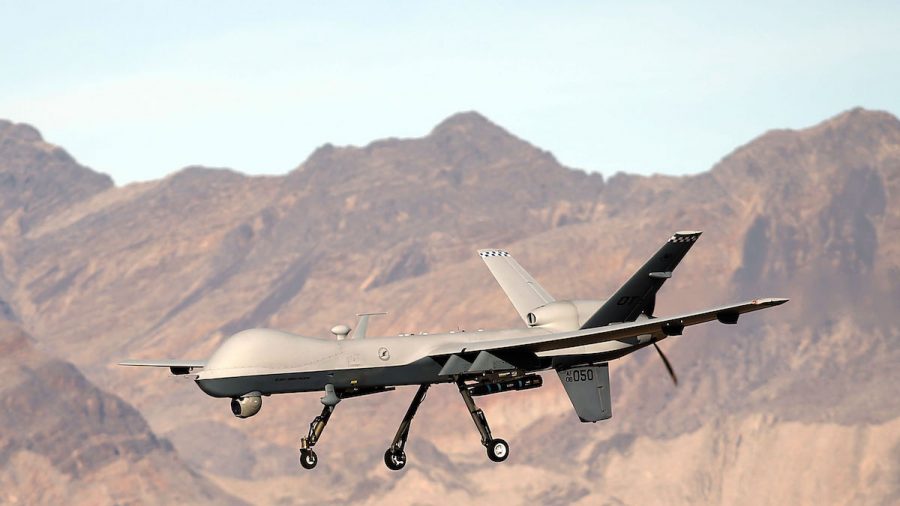The family of a retired bricklayer living in northwest Syria has claimed he was killed in a May 3 airstrike, calling into doubt a U.S. military report claiming they had killed a senior Al-Qaeda leader.
On May 3, the U.S. Central Command (CENTCOM) published a statement claiming its forces “conducted a unilateral strike in Northwest Syria targeting a senior Al-Qaeda leader.” The CENTCOM statement did not identify the suspected Al-Qaeda leader, but the military command said, “We will provide more information as operational details become available.” No additional details followed.
On the same day that CENTCOM disclosed the strike, residents in the northwest Syrian town of Qorqanya alerted the Syrian Civil Defense organization—otherwise known as the “White Helmets”—to the body of Lotfi Hassan Misto. On May 3, the “White Helmets” posted on Twitter that Misto had been killed by an unidentified drone while he was leading a flock of sheep to graze on the outskirts of the town. The remains of multiple sheep were also found near Misto’s body.
Misto’s neighbors told The Washington Post that they had observed what they believed were MQ-9 Reaper drones surveilling the field where Misto was killed for weeks beforehand. The MQ-9 Reaper, also known as the Predator B, is an unmanned combat aerial vehicle (UCAV) capable of conducting airstrikes with weapons like the AGM-114 Hellfire II air-to-ground missile.
Photos posted online after the May 3 strike showed missile fragments. One unverified photo shared by a Syrian journalist showed a scrap of metal plating with a warning label. The warning label is similar to some that have been photographed on the Hellfire II missile used by U.S. forces.
CENTCOM spokesman Michael Lawhorn has since told The Washington Post that they are aware of reports of a civilian casualty, and are continuing to assess the situation.
“CENTCOM takes all such allegations seriously and is investigating to determine whether or not the action may have unintentionally resulted in harm to civilians,” Lawhorn told The Washington Post on Thursday.
NTD News reached out to CENTCOM with additional questions, but the command did not respond by the time this article was published.
CENTCOM has yet to name the senior Al-Qaeda leader they believed they had targeted in the May 3 strike.
Civilian Casualties
Civilian casualties have occurred throughout the Global War on Terrorism.
A November 2021 report by The New York Times revealed that as many as 70 civilian noncombatants were killed by a U.S. airstrike in March of 2019 as U.S. and coalition forces fought to seize the ISIS stronghold of Baghouz in eastern Syria. The New York Times report indicated military officials had not investigated the 2019 airstrike. The Pentagon subsequently ordered a fresh review of the incident.
In the closing days of the withdrawal from Afghanistan, U.S. forces botched another airstrike. CENTCOM had originally reported the strike had targeted an ISIS member who posed a threat to evacuation operations at Hamid Karzai International Airport in Kabul, but subsequent evaluations revealed the strike had actually killed 10 innocent Afghan civilians. The Pentagon ultimately concluded the incident was a tragic mistake, and determined that no military troops or officials would face disciplinary action for the incident.
In August of last year, the Pentagon announced a new mechanism to mitigate and respond to civilian injuries and deaths during U.S. military operations. The mechanism, known as the “Civilian Harm Mitigation and Response Action Plan” establishes a center to develop and incorporate civilian harm mitigation practices into military operational planning and doctrine. The plan was described as a means of improving accountability and transparency to civilians harmed by military operations.

